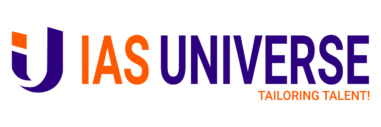1. The balance of payments (BoP) records the transactions in goods, services and assets between residents of a country with the rest of the world for a specified time period typically a year.
2. There are two main accounts in the BoP — the current account and the capital account.
3. It is difficult to record all international transactions accurately. Thus, we have a third element of BoP (apart from the current and capital accounts) called errors and omissions which reflects this.

Current Account
- Current Account is the record of trade in goods and services and transfer payments.
- Trade in goods includes exports and imports of goods.
- Trade in services includes factor income and non-factor income transactions.
- Transfer payments are the receipts which the residents of a country get for ‘free’, without having to provide any goods or services in return. They consist of gifts, remittances and grants. They could be given by the government or by private citizens living abroad.
Buying foreign goods is an expenditure from our country and it becomes the income of that foreign country. Hence, the purchase of foreign goods or imports decreases the domestic demand for goods and services in our country. Similarly, selling of foreign goods or exports brings income to our country and adds to the aggregate domestic demand for goods and services in our country.
Balance on Current Account
Current Account is in balance when receipts on current account are equal to the payments on the current account.
A surplus current account means that the nation is a lender to other countries and a deficit current account means that the nation is a borrower from other countries.
Balance on Current Account has two components:
- Balance of Trade or Trade Balance
- Balance of Trade (BOT) is the difference between the value of exports and value of imports of goods of a country in a given period of time. Export of goods is entered as a credit item in BOT, whereas import of goods is entered as a debit item in BOT. It is also known as Trade Balance.
- BOT is said to be in balance when exports of goods are equal to the imports of goods.
- Surplus BOT or Trade surplus will arise if a country exports more goods than what it imports. Whereas, Deficit BOT or Trade deficit will arise if a country imports more goods than what it exports.
- Balance on Invisibles
- Net Invisibles is the difference between the value of exports and the value of imports of invisibles of a country in a given period of time.
- Invisibles include services, transfers and flows of income that take place between different countries.
- Trade in Services includes both factor and non-factor income.
- Factor income includes net international earnings on factors of production (like labour, land and capital).
- Non-factor income is net sale of service products like shipping, banking, tourism, software services, etc
Capital Account
- Capital Account records all international transactions of assets.
- An asset is any one of the forms in which wealth can be held, for example: money, stocks, bonds, Government debt, etc
- Purchase of assets is a debit item on the capital account. For instance, if an Indian buys a UK Car Company, it enters capital account transactions as a debit item (as foreign exchange is flowing out of India).
- On the other hand, sale of assetsis a credit item on the capital account. For Instance, sale of share of an Indian company to a Chinese customer
Balance on Capital Account
- Capital account is in balance when capital inflows (like receipt of loans from abroad, sale of assets or shares in foreign companies) are equal to capital outflows (like repayment of loans, purchase of assets or shares in foreign countries).
- Surplus in capital accounts arises when capital inflows are greater than capital outflows, whereas deficit in capital account arises when capital inflows are lesser than capital outflows.
Balance of Payments Surplus and Deficit
- The essence of international payments is that just like an individual who spends more than her income must finance the difference by selling assets or by borrowing, a country that has a deficit in its current account (spending more than it receives from sales to the rest of the world) must finance it by selling assets or by borrowing abroad.
- Thus, any current account deficit must be financed by a capital account surplus, that is, a net capital inflow.
- Current Account + Capital Account =0
- In this case, in which a country is said to be in balance of payments equilibrium, the current account deficit is financed entirely by international lending without any reserve movements.
- Alternatively, the country could use its reserves of foreign exchange in order to balance any deficit in its balance of payments. The reserve bank sells foreign exchange when there is a deficit. This is called an official reserve sale.
- The decrease (increase) in official reserves is called the overall balance of payments deficit (surplus).
- The basic premise is that the monetary authorities are the ultimate financiers of any deficit in the balance of payments (or the recipients of any surplus).
Errors and Omissions
It is difficult to record all international transactions accurately. Thus, we have a third element of BoP (apart from the current and capital accounts) called errors and omissions which reflects this.
